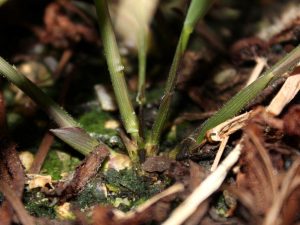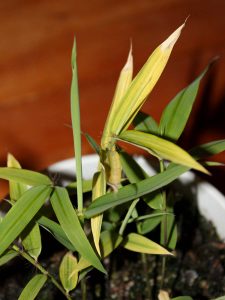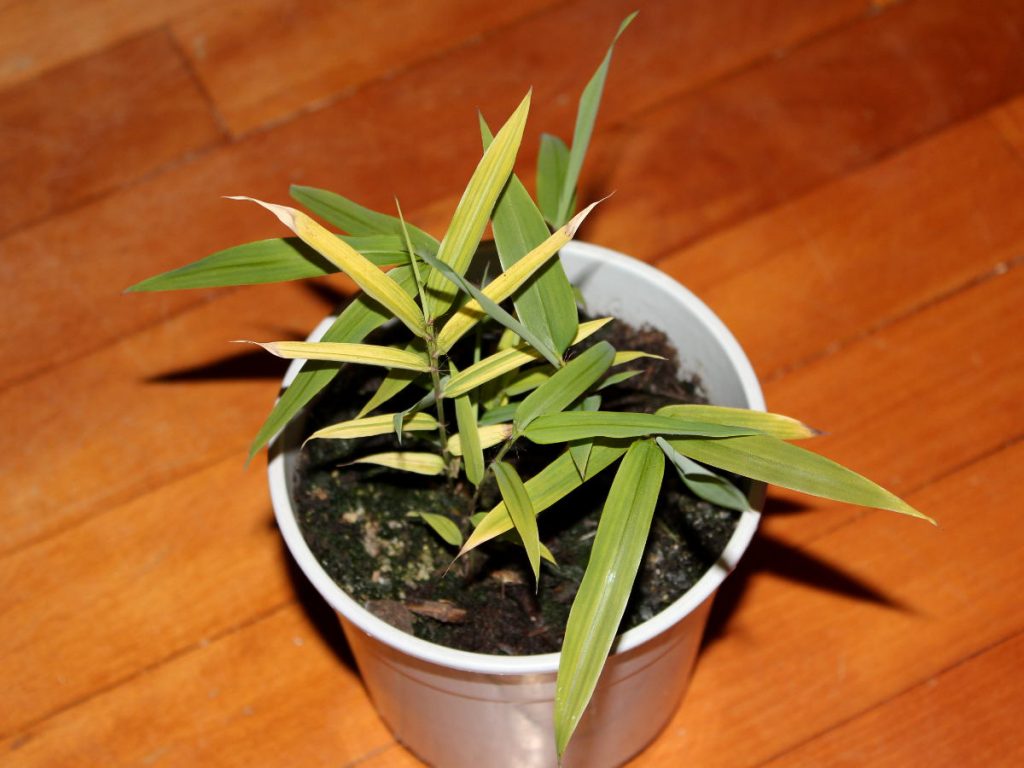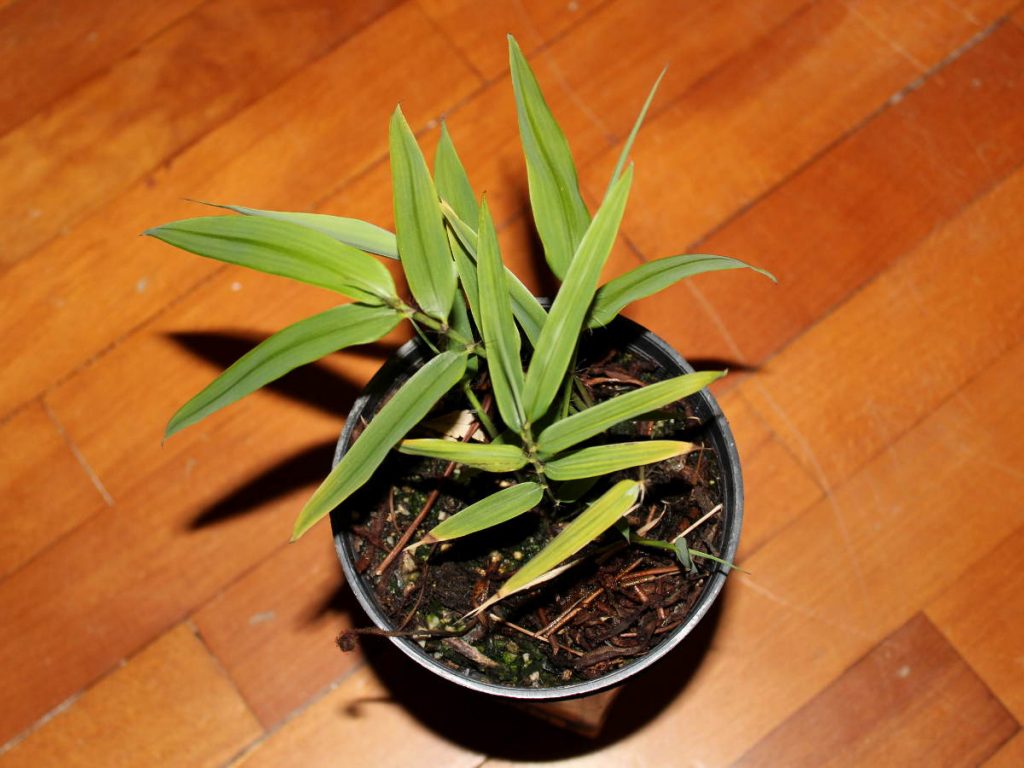Phyllostachys arcana Luteosulcata seedlings – part 2

Like promised, here’s an update on my Phyllostachys arcana Luteosulcata seedlings. They all started shooting, even the most neglected ones in the back that get dried out occasionally and are growing much, much slower. The pot with two planted seedlings that is located directly under the light, has enough water and good drainage is performing unbelievably well. At this point it’s not possible to compare them to any of the bamboo seedlings I’ve grown in the past, Borinda fungosa was growing vigorously, but not nearly as aggressive as these seedlings. As soon as first shoots managed to grow first two leaves, the plants exploded with new shoots, this time, two or even three, combined with first sets of branches on original stems.

The variegated Phyllostachys arcana Luteosulcata seedling is growing much slower, with only one shoot next to the original stem, but the shoot also shows signs of variegation, which is excellent news. Compared to other seedlings with 4 or more shoots, it’s rather slow, which can be expected from a seedling that is almost completely yellow with a couple of stripes on each of it’s leaves. There’s another issue with the pot it’s placed in – there are several seedlings growing in the same small pot and the soil often dries out too much. Other seedlings seem to take the drought way better than the variegated one that starts showing dry leaf tips instantly. When I plant them into separate pots, hopefully things will turn for the better. It’s growing nicely though, but it could do better.
In the near future I intend to get all the seedlings into separate pots and use trays to retain water longer. That should make the neglected seedlings take off and keep the variegated one from curling and drying leaf tips.



I tried placing two seedlings into milk carton that catches overflow water when I water the bamboo. It seems to work. These two bamboos are the most aggressive. I intend to use the same method with all my seedlings. On the bottom of the pot there’s a lot of healthy looking roots that don’t really seem to bother if they stay submerged in (non-aerated) water that flows into the milk container.